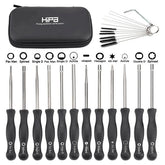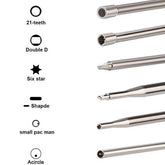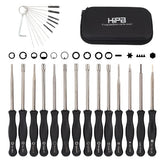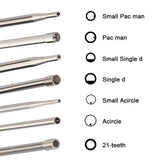Quick & Simple Way to Check for Ignition Spark Using An Adjustable Spark Tester
Ignition Spark Tester
The ignition spark tester provides an easy way to show whether your ignition coil is putting out an ignition voltage and how strong it is. It helps you eliminate the ignition coil as a cause of problems when you're having a no-start with no fire situation. However, it is not for testing your spark plug but your ignition coil.
The spark gap can be adjusted at this tester. Therefore, you can check the power reserve for different small engines, motorcycles or vehicles by turning the adjustable screw to adjust the spark gap.
Type: Coil-on-plug Spark Tester
Applications: small engines, some motorcycles, vehicles like Ford, Chrysler, Mitsubishi, Nissan and More.
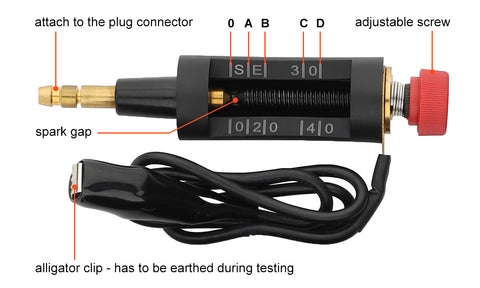
Operation Guide
STEP 1
Pull off the spark plug cap and attach it to the tester. The tester's tip can be unscrewed for use on small engines and some motorcycles.
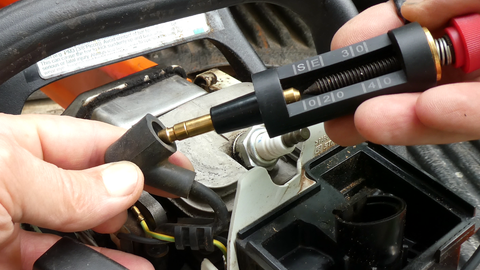
STEP 2
Earth the alligator clip of the tester (or clip it to the spark plug). It's important to keep the tester away from the machine's ground, or the spark might find a shortcut to any earthed component and will not jump correctly in the tester.
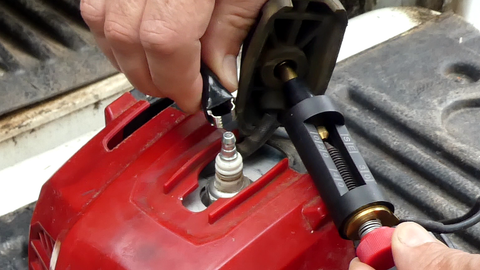
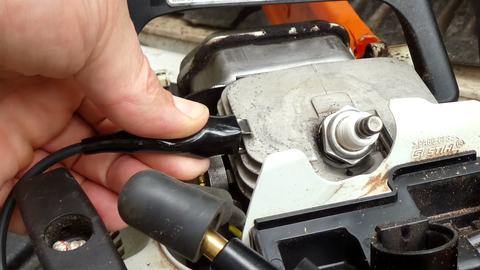
STEP 3
Adjust the tester's screw to set a spark gap to 5mm (point A) on the tester for your 2-cycle small engine.
STEP 4
Start the machine with the ignition system and observe the spark gap. If the spark is good and strong, then the ignition system is not the problem.
Download Ignition Spark Tester Instruction Manual.PDF
 CAUTION
CAUTION
• When using the tester on engines with more than one cylinder, please make sure that all plug connectors are earthed, or it might damage your ignition system.
• Be careful that the spark gap is like an open fire which could ignite an explosive mix and cause an exposure, so please empty the carburetor and disconnect the fuel feed before your test.
 WARNING
WARNING
• NEVER touch the tester or ANY ignition system parts during the testing.
• NEVER adjust the spark gap before the ignition system has been shut off.
• There can be extremely high and dangerous to life voltages of more than 30KV in ignition systems.













